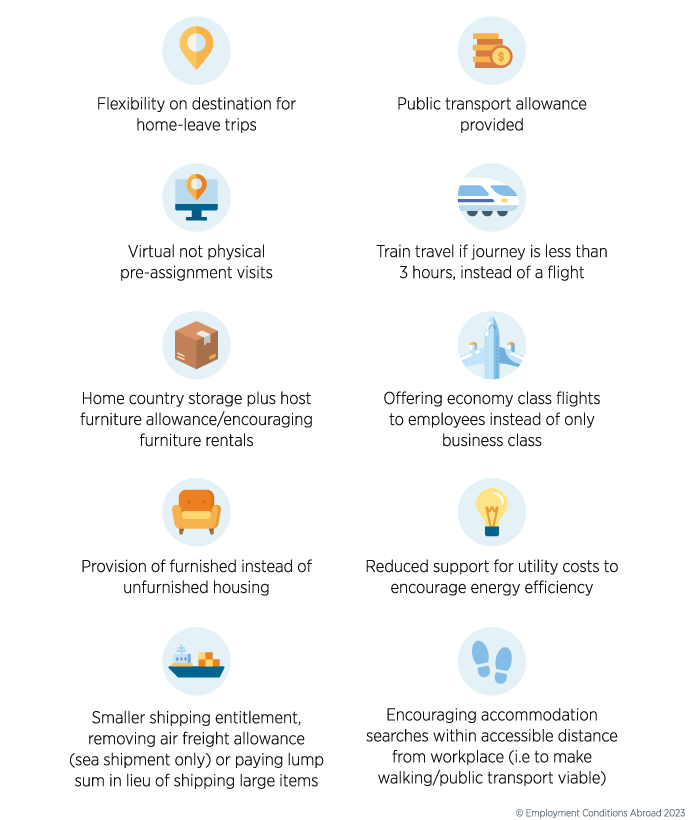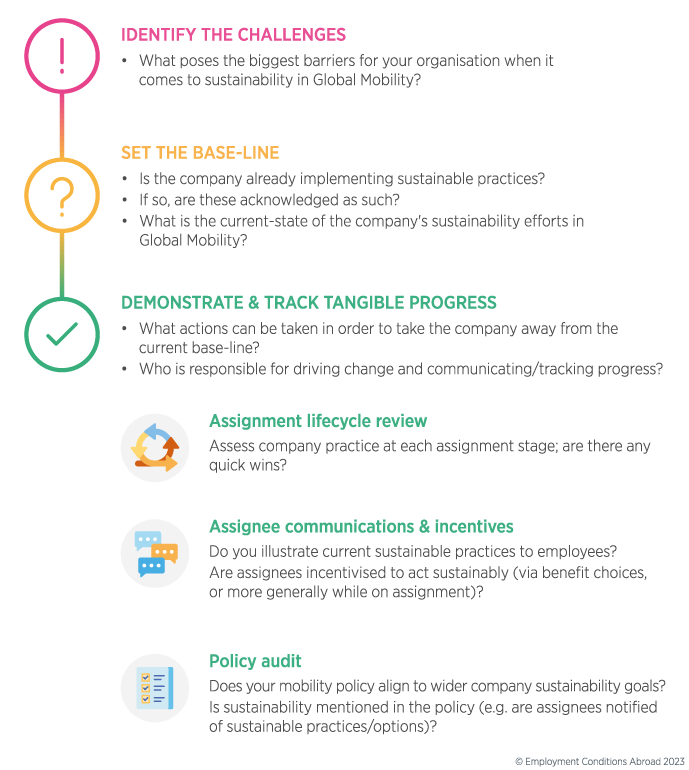It is clear that achieving sustainability in Global Mobility (GM) is inherently challenging. However, at ECA’s recent Global Mobility Hub, we were energised and inspired to see clients sharing success stories and discussing the best approaches to improving sustainability. This demonstrated that implementing more sustainable practices is currently at the forefront of Global Mobility thinking. Seeing the enthusiasm gave us confidence that a better future for sustainability in GM lies ahead.
Unknown obstacles
ECA has observed that barriers to sustainability can be deep rooted and may need more than just a few tweaks to the provision of specific assignment benefits. Indeed, there are several identifiable layers to be overcome collectively to spark change.
For example, if you struggle to answer any of the following questions about the practices of your company’s GM function, this should highlight a few less-known obstacles that might need to be overcome to action change.
- Who in my organisation is invested in making sustainable changes?
- How does my company inspire assignees to act sustainably?
- Does the company mobility policy highlight sustainable efforts being made?
- Do our assignment locations make global initiatives difficult?
- Does my company align vendor selection to their sustainability goals?
- How does my company hold themselves accountable, or track sustainable success?
Tangible changes
While answers to such questions will outline potential barriers to progress (which can be dealt with in isolation), a fruitful early initiative might be to focus on quantifiable changes that can be made to assignment benefits.
Themes we see across the lifecycle of assignments revolve around offsetting, avoiding or reducing the use of non-sustainable practices, with companies increasingly adopting some of the following benefit changes:

Actions are being taken to adopt sustainable practices like those outlined above, with companies implementing innovative changes to their current approach. With improving technologies and pressure from external regulations, there is no doubt that further change is on its way.
Measuring Change
GM teams are clearly taking steps in the right direction when it comes to sustainability. However, on top of the inherent challenges and company specific obstacles, lies another layer of complexity… tracking and evidencing progress.
It is difficult to have confidence in the level of sustainability your organisation demonstrates without having a way to measure improvements. We believe there are three areas to focus on:
- Transparency
- Communication
- Engagement
If company specific challenges make certain changes impossible to implement, how are these being highlighted? Are current offset practices or other policy decisions being highlighted sufficiently to show progress?
Without an aim, progress will rarely gain momentum. In addition, without determining your current state, tracking progress is near impossible.
Our key recommendation is therefore the setting of a baseline.
Where does your company currently stand, compared to where you aim to be?
Without knowing the answer to this question, establishing a way to track your changes will be difficult.
Once targets are set, who is holding the company accountable for change? Are sustainability champions already established in your company? How are assignees being introduced to sustainable initiatives?
These are all questions which require thought, but hopefully provide foundations to either start the journey, or reinforce progress.
We have created an action plan to help you kick-start the process. It is designed to work no matter what stage of the sustainability journey your company is on.

Firstly - We think that having an insight into your challenges from the outset will help to create a better action plan. Being honest about any obstacles could help determine the most appropriate next steps for your GM practice.
Secondly - Setting a base-line of your current-state allows you to know where you stand and helps decide what your aims are. Using the first step, you can better illustrate how to overcome your obstacles, or identify a way to mitigate or work with them.
Lastly, and most importantly, is developing new initiatives; whether that be actual practices in your assignment lifecycles, assignee communications, policy change or having dedicated employee sustainability champions to track and communicate progress.
Even small changes are positive steps in the right direction. With the development of sustainable alternatives, what may have been an unavoidable red mark in the past, could soon have a green light.
FIND OUT MORE
If you are looking for support, you can discuss your requirements or goals with our Consultants who can provide:
- a detailed policy review to identify areas where your company is already taking measures in this field and highlight areas for change or improvement;
- bespoke advice on the specific sustainability targets that your company can adopt, aligning this within your GM policy.
Please contact us to speak to a member of our team directly.
Further reading
We look at ways to minimise the impact of global mobility on the environment at different stages of the assignment process in our blog post, "Making global mobility more sustainable", and how these decisions may impact an assignee in another post, “Balancing assignee satisfaction with sustainable actions”.